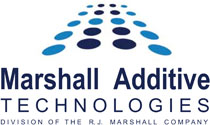It is our pleasure to announce that David Roberts will join us as Technical Director of The R.J. Marshall Company effective January 1, 2019. He will be working between his home office in Sheboygan Falls, Wisconsin and our headquarters in Southfield. David will be managing all day to day technical activities, new product development, technical sales …
ATH and MDH in elastomers
Elastomers can tolerate ATH or MDH loadings of 60% or somewhat higher without loss of useful properties although hardness is obviously increased. ATH is substantially less costly but limits processing temperatures to below about 200–220 °C. A combination of roughly equal amounts of ATH and MDH will often be found more effective in flame retardancy than …
Rubber Flame Retardancy
Two classic approaches to flame retardancy of rubber are the incorporation of a halogen-antimony system and of a water-generating heat-sink additive such as ATH or MDH. Often, these two systems are used together. A “standard package” may be 15–20 phr of chloroparaffin (70% Cl, a solid chloroparaffin). An improved package to pass a more stringent …
Antimony Trioxide – Did you know?
Antimony trioxide is rated as R40 in the EU (limited evidence of a carcinogenic effect). The US EPA has not given it a carcinogenicity classification. It seems to have little ecotoxicological problem but in some jurisdictions it qualifies as a “heavy metal.” As a synergist for halogenated flame retardants, it is difficult to find alternatives, …
Huntite-Hydromagnesite
Huntite-Hydromagnesite is a natural mineral mined in Greece and Turkey and sold by R.J. Marshall as H-TEC HTMC9. It is an approximately equal mixture of huntite, Mg3Ca(CO3)4, and hydromagnesite, Mg4(CO3)(OH)2∙3H2O, and is dried, crushed, finely ground, and classified to produce a white powder, the majority of its particles having less than 1 micron size. It …
Magnesium Hydroxide Uses and Synergies
In applications above the water-loss range of ATH (i.e., around 200°C), MDH can be used where ATH cannot. They both work by water release (heat sink and fuel dilution) and leave a barrier. Combinations of ATH and MDH often show a better-than-additive effect. In chlorinated polymers with antimony trioxide, magnesium hydroxide generally provides not only …
ATH and Enhancements w/ Zinc Borate
ATH is, by weight and for all applications, the largest flame retardant at this time, although it has been exceeded on a monetary basis by tetrabromobisphenol A. There are two main categories, ground and precipitated. Both varieties have rather similar thermal properties, but differ in their particle size and shape. Both have their origin in …
“Flame Retardants” and “Standard Testing”
The term “flame retardants” should be clearly understood to mean materials (additive or reactive) that deter or extinguish flame propagation under standard laboratory test conditions. The definition set forth by the relevant ASTM terminology subcommittee for a flame retardant chemical is “a chemical which, when added to a combustible material, delays ignition and reduced flame …
PVC Flame Retardance: The Effects of Formulation Change
What are Halogen Flame Retardants?
By: Jim & Ann Innes In our last post we went over what Flame Retardants (FR) are. Now let’s look at a brief overview of halogen flame retardants. These FR types are currently the largest value in the FR marketplace. They are classic, there are many different products, they are widely used, and they have been …
